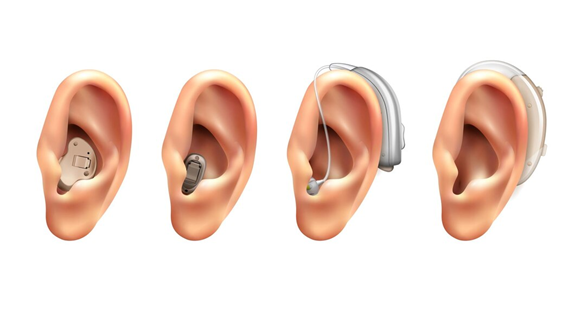Hearing aids are small electronic devices that are worn in or behind the ear to help people with hearing loss hear better. They work by amplifying sound waves and making them louder and clearer. In this blog post, we will discuss the types of hearing aids, who may require them, how to wear and care for them, and how to get used to wearing them.
Types of Hearing Aids
Behind-the-ear (BTE): This type of hearing aid sits behind the ear and is connected to a custom earpiece that sits inside the ear. They are the most common type of hearing aid and are suitable for people with mild to severe hearing loss.
In-the-ear (ITE): These hearing aids fit completely inside the ear and are suitable for people with mild to moderate hearing loss.
In-the-canal (ITC): These hearing aids are similar to ITE hearing aids but are smaller and fit further inside the ear canal. They are suitable for people with mild to moderate hearing loss.
Completely-in-the-canal (CIC): These hearing aids are the smallest type of hearing aid and fit completely inside the ear canal. They are suitable for people with mild to moderate hearing loss.
Who May Require Hearing Aids?
Hearing aids may be required by people who have difficulty hearing or understanding speech due to a variety of reasons, including:
- Age-related hearing loss
- Noise-induced hearing loss
- Genetic hearing loss
- Inner ear damage
- Ear infections
- Otosclerosis
- Meniere’s disease
How to Wear a Hearing Aid?
- Consult with an audiologist to get a proper hearing evaluation and to select the best type of hearing aid for your needs.
- Fit the hearing aid properly in the ear, making sure it sits comfortably and snugly.
- Turn on the hearing aid and adjust the volume to a comfortable level.
- Practice using the hearing aid in a quiet environment before wearing it in noisy settings.
How to Take Care of a Hearing Aid?
- Clean the hearing aid regularly with a soft, dry cloth to remove dirt and wax buildup.
- Avoid exposing the hearing aid to moisture or excessive heat.
- Replace the batteries regularly and keep a spare set on hand.
- Store the hearing aid in a dry, cool place when not in use.
How to Get Used to Wearing a Hearing Aid?
- Wear the hearing aid for short periods of time at first and gradually increase the amount of time you wear it each day.
- Practice listening in different environments, such as quiet rooms, noisy restaurants, and crowded events.
- Take advantage of hearing aid support groups and counseling services to help adjust to wearing a hearing aid.
Conclusion
Hearing aids can help improve the quality of life for people with hearing loss. With proper selection, fitting, and maintenance, hearing aids can make communication easier and improve social interactions. If you are experiencing hearing loss, speak to an audiologist to discuss your options for hearing aids.


